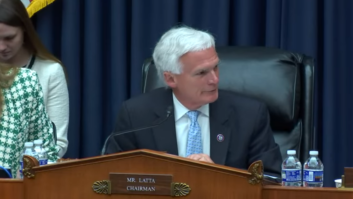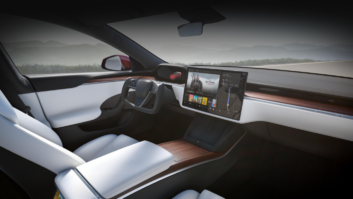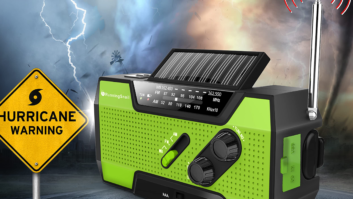Commenters on the state of the radio industry are passionate and engaging, striving to energize management and their troops in the creation of new ideas.
Some may miss the point. The ultimate reality is that radio will have to totally reinvent itself. The concept of “top-down” broadcasting from a radio tower to passive listeners in real time is no longer relevant. It’s now dangerous to buy a station for stick value and do cash-flow analysis and projected ROI based on “expected sales.”
Consumers (“listeners”) are now in charge. They seek content they can manipulate; delivered when they want it, in the form they want it, and containing only what they want. Radio stations operating in real-time can’t do this. Multiple HD Radio channels might provide limited content choice but can’t sort, prioritize or manipulate content to the continued satisfaction of their constituents.
Some visionary radio operators are creating programming for a new mobile audience, an audience that will, in its “radio” purchases, forgo the “radio” for a fully compatible wireless receiver that also handles telephone calls, real-time alerting, messaging, weather/news/sports et al.
At the moment that’s the cell phone. A few weeks back we saw the comment that radio will use “tagging” to help resurrect value. Ironically, that same day the city of Baltimore announced a new “4G” wireless platform that has the potential to do an end-run on AM/FM broadcasting, by providing new Internet services to the mobile environment.

Mark Durenberger Microsoft and others are working on Wi-Fi service to cars; Chrysler has announced Wi-Fi receivers. Presto: The automobile audience will have thousands of new listening choices and access to the world of information. Car satellite radios will compete for a while, and then Sirius will adapt to the new mobile competition.
Broadcasters who believe their 100,000-watt stick will remain the best way to reach 100 percent penetration may be suffering from a form of “digital paralysis.” Electronics manufacturers move toward a truly universal “radio” that will decode Internet services and satellite radio … and maybe the heritage AM/FM signals. At some point, before we get much older, all these services will ride a common platform.
Once that platform is in place, success can only be measured by content value. My good friend Stanley S. Hubbard was fond of saying, “Give me comparable coverage and I’ll compete with anyone.” In that respect, many of the industry’s boosters may be correct. New ideas will be needed, energy and leadership top-down and bottom-up, to create successful content.
But that content’s form and accessibility will have to have the attributes that appeal to consumers … and will have to be delivered in a form that’s compatible with the rest of the new information/entertainment delivery media technologies. That’s why many stations are streaming.
At radio’s birth, many entrepreneurs fell by the wayside when faced with the real cost of operating their experimental AM stations. Almost a third of the operators on the air in 1920 and 1921 were silent by 1925. That of course was before AT&T tried advertising on WEAF. And the rest, as they say, is history. Today, when not filling much of each hour with spots, operators are developing business plans based on how many separate spots can be inserted in the Internet stream.
Today and in the future, radio broadcasters have to break away from that traditional thinking. Michael Bloomberg has been quoted as saying, “Broadcasters haven’t had an original idea since 1929 … they just play follow the leader.” Elitist as this sounds, it’s sometimes demonstrably true. While terrific ideas for a revitalization of radio have appeared in RW and elsewhere, some industry leaders are unwilling to rock the boat. “If it cash-flows, we’d better not mess with it,” goes the mantra. “We’ll have to continue cost-cutting to meet the expected budget goals.” And there are some who continue to look at everyone else in the business for that “great idea” that’ll save radio.
Seven-minute stop sets will have no place in the new “broadcasting” world, where broadcasting competes with innovative Internet programming from such disparate authors as creative kids in their basements and successful program moguls who want to see their content distributed as widely as possible.
And why would the great radio talent be limited to clearance on a small group of their own stations when they can reach everyone via a new “universal radio” delivery technology?
Stan Hubbard had another saying: “Provide what the public needs and the profits will take care of themselves.” This may be why the successful news/talk AM stations still have a future. But their services will be heard over delivery systems quite different from just a radio tuned to 700 on the AM dial.
Visionary broadcasters are investing in new ways to reach an audience that will no longer haul that radio around with them. After all, their programming costs are high; they must be defrayed over enough delivery vehicles to aggregate serious audiences. That formula’s been operative since it justified the first radio networks 80 years ago.
(Sidebar: Major sports were a bedrock revenue opportunity for those stations willing to pay the rights for such exclusive programming. It’s easy to look to the future of that part of the business. Just note that a few years ago, Major League Baseball sold its game package to the satellite radio folks.)
A further irony: Broadcasters’ investment in HD Radio and other technology improvements is made in an effort to “compete” with other delivery systems. It’s an expensive investment in an era of cost-cutting mandates. On the AM side, IBOC will effectively limit the former wide-area reach of the big stations, and reliable digital coverage will not extend much farther than the metro and related inner markets. That seems to be okay with most; with some exceptions, these 50-kilowatters have already taken on a “metro” identity in their marketing.
Traditional radio has had a long run, far longer in fact than most delivery media, with the exception of the printed page. “Over-the-air” radio broadcasting has always had legs. But tomorrow’s radio must meet the needs of the listener who’s fully armed with choices. That means an overhaul of content … and a recognition that the AM/FM signal will be but one of a plethora of delivery methods.
I’ve been in radio since the 1950s and I’ve tried not to look back. In fact, I’m paid to look past tomorrow. It doesn’t take a terrific leap of faith and comprehension to realize the radio world we’ve known has changed more in the past five years than it did in the first 80. You can take that to the bank when you ask for development funds to invest in the new wireless world.
The author, a long-time contributor to Radio World, has more than 50 years of broadcast engineering experience and says he is “now working well into the future, on the technology design team for a ‘Smart House,’ the new Minnesota Twins baseball stadium in Minneapolis.”












